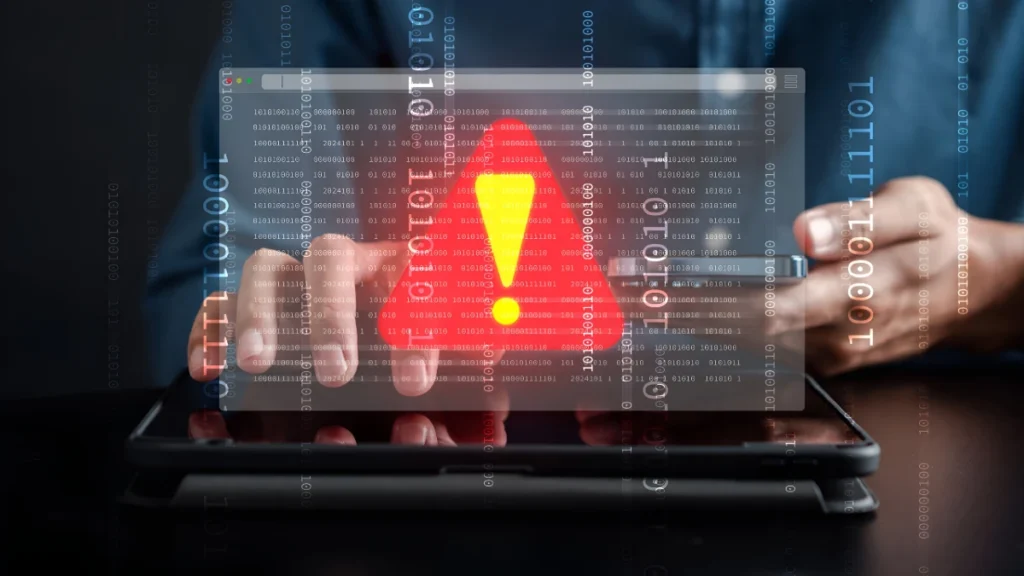How to Avoid 9 Common Cybersecurity Mistakes Every Beginner Makes

You spend six months earning your Security+ certification, build an impressive home lab, and apply to 200 cybersecurity jobs. Result? Cricket sounds from recruiters. Meanwhile, your friend attends a $60 BSides conference, makes three connections, and lands a $95,000 SOC analyst role within weeks.
Welcome to the harsh reality of cybersecurity career transitions in 2025
.Despite 3.5 million unfilled cybersecurity positions globally and entry-level salaries averaging $99,400-$132,000, most beginners sabotage their chances before they even start. They chase advanced certifications nobody asked for, ignore the AI and cloud security revolution reshaping the industry, and treat networking like an optional side quest.
Here’s what the statistics won’t tell you: 51% of hiring managers now accept more applications from non-cybersecurity backgrounds, but they’re not hiring certificate collectors. They want professionals who understand that 78% of organizations are battling AI-powered threats right now, not theoretical concepts from outdated textbooks.
This guide reveals the nine critical mistakes that keep talented beginners stuck in application limbo while others fast-track into six-figure careers. Each mistake costs months of wasted effort and thousands in lost income. More importantly, each one is completely avoidable.
Waiting Too Long to Apply for Jobs

The biggest misconception among cybersecurity beginners is believing they need extensive credentials before applying. This perfectionist trap costs months, sometimes years, of career progression. Entry-level cybersecurity positions currently average $99,400-$132,000 annually across the United States, making early entry financially rewarding.
The current job market strongly favors applicants willing to start early. Between September 2023 and August 2024, more than 457,000 cyber-related jobs were posted, with cybersecurity declining only 22% compared to 28% for general tech roles. This resilience demonstrates the field’s stability even during economic uncertainty.
Despite economic pressures, 53% of companies are actively considering new cybersecurity hiring, but many struggle to find candidates. Research from ISC2 reveals that 51% of hiring managers are accepting more applications from applicants with non-cybersecurity backgrounds, and 41% are recruiting non-technical people within their organization.
Early applications serve as market intelligence gathering. You’ll discover what employers actually prioritize versus what job postings demand. According to cybersecurity hiring expert Larry Trittschuh, many “required” qualifications are actually wish lists, not dealbreakers.
Action Steps: Start applying when you reach 60-70% of posted requirements. Create a simple tracking system to monitor application responses and interview feedback. Use early interviews to refine your pitch and identify skill gaps. Remember that opportunities and threats permeate the digital world, creating increasingly high demand for cyber security jobs, with experience and location determining rapid salary growth potential.
The key is momentum over perfection. Every application and interview builds your cybersecurity job application strategy and market understanding.
Overemphasizing Technical Skills While Neglecting Soft Skills

A critical oversight among cybersecurity beginners is underestimating the importance of communication, teamwork, and problem-solving abilities. According to ISC2’s 2025 research, 51% of hiring managers agree that nontechnical skills will be more important for cybersecurity professionals in an AI-driven world. This shift reflects AI’s growing capability to handle routine technical tasks.
The data reveals a stark reality: 84% of hiring managers use skill-based assessments, but they prioritize strong nontechnical skills alongside technical competency. The top-ranked abilities include teamwork, independent work capability, analytical thinking, and clear communication. According to ISACA research, 51% of employers identify communication, problem-solving, and teamwork as the biggest gaps they see in candidates.
This emphasis makes practical sense. During incident response, a cybersecurity professional must clearly explain technical threats to non-technical executives within minutes. SOC analysts work in teams requiring constant collaboration and information sharing. As cybersecurity expert Larry Trittschuh notes, if there was one skill he’d develop again, it would be empathy, because falling into patterns of demanding compliance without explanation limits adoption and creates resentment.
Real-world applications: Can you explain a ransomware attack’s business impact to a CEO in two minutes? Can you write clear incident reports that board members understand? Can you collaborate effectively during high-stress security breaches?
Development strategy: Practice translating technical concepts into business language. Join cross-functional projects where you interact with non-technical stakeholders. Document your problem-solving processes. Remember that communication is especially important for compliance analysts, who need to consistently communicate with other teams about current risks.
Focus on developing these cybersecurity soft skills alongside technical training—they’re your competitive advantage in an AI-enhanced workplace.
Falling for the “IT Foundation First” Myth

One of the most limiting beliefs among career changers is thinking extensive IT experience is mandatory before entering cybersecurity. This misconception delays entry and ignores the diverse skill sets cybersecurity actually requires. The Google Cybersecurity Professional Certificate requires no previous experience and costs around £49 monthly, demonstrating how accessible entry-level training has become.
The reality contradicts this myth. GRC roles do not require deep technical skills; instead, these roles focus on helping organizations manage cybersecurity risks, align strategies with business goals, and ensure compliance with regulations. Many GRC professionals come from business, law, or even liberal arts disciplines, with what matters most being willingness to learn and understanding how compliance and risk fit into cybersecurity’s bigger picture.
According to HSBC’s Global Head of Cybersecurity Rebecca Cox, “Curiosity—something I’d classify as both a skill and mindset—is something we always look for in employees. Being curious helps someone learn, change and adapt, which is fundamental to any role.” This perspective from a major financial institution illustrates how transferable skills often outweigh technical prerequisites.
Non-technical pathway examples: Privacy analysts manage GDPR compliance, risk analysts assess business threats, compliance specialists ensure regulatory adherence, and security awareness coordinators design training programs. According to Talent.com, GRC analysts average $112,000 annually, with GRC managers earning $179,000—significantly higher than traditional IT support roles.
Strategic approach: Identify transferable skills from your background. Project management translates to security program coordination. Legal experience applies to compliance roles. Business analysis skills support risk assessment. Focus on cybersecurity without IT background opportunities in governance, risk management, and compliance areas where business acumen often trumps technical depth.
Start with security-focused learning rather than broad IT fundamentals—it’s more direct and often more relevant to modern cybersecurity needs.
Ignoring the AI and Cloud Security Revolution

Picture this: you spend months mastering firewalls and network basics, only to discover employers want cloud security experts and AI threat specialists. That’s the reality hitting cybersecurity beginners hard in 2025.
The numbers don’t lie. According to Darktrace’s latest report, 78% of security leaders say AI-powered attacks are wreaking havoc on their organizations. Meanwhile, cloud security tops every “most wanted skills” list, with 66% of professionals expecting AI to revolutionize cloud defense.
Here’s the kicker: job postings requiring AI knowledge jumped from 6.3% to 7.3% in just one year. Sounds small? That’s thousands more opportunities requiring skills most beginners ignore.
The wake-up call: Traditional security training won’t cut it anymore. While you’re studying decades-old concepts, attackers are using AI to craft personalized phishing campaigns and exploit cloud misconfigurations automatically.
Smart move: Start with AWS Cloud Practitioner or Azure fundamentals. These cost under $200 and take 2-3 months to master. Follow AI cybersecurity news and understand how machine learning enhances threat detection.
Reality check: Only 42% of cybersecurity professionals understand the AI tools in their own security stack. Be in the informed minority, and you’ll stand out immediately.
The future belongs to professionals who bridge traditional security with emerging technologies. Don’t get left behind studying yesterday’s threats while tomorrow’s attacks are already here.
Choosing Impractical Certifications Over Market Demand

Want to know the fastest way to waste six months? Chase a CISSP certification as a beginner. Here’s the brutal truth: advanced certifications without experience are resume red flags, not advantages.
ISC2’s 2025 research reveals what employers actually want for entry-level roles: CompTIA Security+, Certified in Cybersecurity (CC), and CASP+. That’s it. Not the impressive-sounding advanced certs that require years of experience you don’t have.
The money talk: Security+ holders average $86,885 annually. The exam costs $392. Do the math—that’s a 22,000% return on investment in your first year. Try getting that from crypto.
The trap: Job postings demand CISSP or OSCP for “entry-level” positions. Ignore them. These are HR copy-paste mistakes, not real requirements. Hiring managers know the difference between wishful thinking and practical needs.
The smart play: Get Security+ first. It covers everything from threat analysis to incident response through hands-on scenarios. Employers trust it because it proves you can actually do the work, not just memorize definitions.
Pro tip: One achieved foundational certification beats five planned advanced ones. Stop planning your certification roadmap to CISO level and start with what gets you hired next month.
Focus on opening doors, not collecting digital badges. Your first job will teach you more than any certification ever could.
Skipping Hands-On Practice and Portfolio Building

I have my Security+ but can’t get hired. Sound familiar? That’s because you’re competing against candidates who can actually demonstrate their skills, not just talk about them.
Employers are tired of interview candidates who ace theory questions but freeze when asked to analyze a log file or explain how they’d investigate a security incident.
The game-changers: TryHackMe for beginners (structured learning paths with hand-holding) and HackTheBox for intermediate learners (real-world scenarios, no tutorials). Start with TryHackMe—complete 50 rooms before attempting HackTheBox.
Portfolio magic: Create a simple GitHub showcasing your completed challenges. Document your home lab setup. Write brief explanations of problems you solved. This transforms you from “another resume” to “this person actually does security work.”
Home lab reality check: Download VirtualBox, install Kali Linux, grab some vulnerable machines from VulnHub. Spend weekends breaking and fixing things. It’s like a video game, but it pays six figures.
The CTF advantage: Participate in Capture The Flag competitions. They’re cybersecurity puzzle competitions that prove you can solve problems under pressure—exactly what SOC analysts do daily.
Theory gets you past HR screening. Hands-on skills get you hired. Spend 70% of your study time practicing, 30% reading. Your future employer will thank you, and so will your bank account.
Networking Neglect and Event Avoidance

While you’re memorizing Security+ flashcards, other beginners are landing jobs through $60 conference connections. The brutal truth? ISC2’s 2025 research shows internship and apprenticeship programs now rank among the top five sources for identifying early-career talent.
BSides conferences are your cheat code. These community events happen in over 50 cities globally and cost less than dinner. Real example: A business analyst attended BSides Ottawa and landed a Senior Cyber Security role months later. Another person met an entrepreneur at BSides Calgary who referred her to an IAM team.
The uncomfortable reality: Multiple cybersecurity professionals confirm that breaking into the industry is “incredibly difficult” without face-to-face networking. Online applications vanish into HR black holes. Personal referrals open doors.
Your action plan: Find your local besides event. Join ISACA or ISSA for mentorship. Attend one virtual conference monthly. Volunteer for nonprofit security projects. Set a goal of three genuine professional connections per quarter.
Bottom line: That $60 BSides ticket could be worth more than a $400 certification. Stop treating networking as optional—it’s career infrastructure.
Rushing Specialization Without Market Understanding

Choosing your cybersecurity specialty on day one is like picking a medical specialty before starting med school. You’re making career decisions with zero context, and the market doesn’t care about your uninformed preferences.
CompTIA’s 2025 data reveals wild demand variations between specializations. Network security, identity management, and penetration testing show massive fluctuations—today’s hot specialty becomes tomorrow’s overcrowded field.
The trap: Everyone wants to be an ethical hacker while ignoring booming areas like GRC or cloud security. Zero Trust specialists are in massive demand now, but this field barely existed five years ago. AI security roles grew 20% annually, yet most beginners don’t know they exist.
Market reality: The six-figure cybersecurity professionals aren’t the most specialized—they’re the most adaptable. When quantum threats emerge or regulations change, generalists pivot while specialists scramble.
Smart strategy: Spend 18 months sampling everything. Try SOC analysis, compliance, risk assessment, and technical security. Follow job trends through CyberSeek. Notice which roles consistently post openings versus which get 500 applicants.
Pro tip: Build T-shaped skills—broad cybersecurity knowledge with one developing strength. Avoid tunnel vision in potentially shrinking niches.
Poor Documentation and Professional Presentation

You built an impressive home lab and solved complex security challenges. Then you describe it all in three resume bullet points. That’s like creating a masterpiece and hanging it in a dark closet.
ISC2 research confirms employers prioritize communication abilities over narrow technical skills for entry-level hires. Your ability to articulate security concepts becomes your competitive advantage.
The portfolio problem: Most beginners treat GitHub like a code dump. Winners craft stories. Instead of “Security Project #1,” write “Automated Vulnerability Assessment: Reduced Manual Testing Time by 75%.” Show impact, not just work.
Professional presentation pays: Your LinkedIn is your first impression. Hiring managers notice candidates with detailed project descriptions and security-focused content sharing. A well-written blog post about security concepts beats any certification badge.
Your implementation plan: Create a simple website showcasing 3-4 detailed projects. Write LinkedIn posts explaining security in accessible language. Maintain GitHub with comprehensive README files. Document your learning journey.
The compound effect: Good documentation skills pay career-long dividends. That documented home lab becomes interview gold. Clear incident reports get promotions. Explaining technical concepts to executives opens leadership doors.
Reality check: Cybersecurity is communication—translating risks into business language, documenting threats, teaching security practices. Treat documentation as core competency, not afterthought.Mistake #7: Networking Neglect and Event Avoidance
While you’re memorizing Security+ flashcards, other beginners are landing jobs through $60 conference connections. The brutal truth? ISC2’s 2025 research shows internship and apprenticeship programs now rank among the top five sources for identifying early-career talent.
BSides conferences are your cheat code. These community events happen in over 50 cities globally and cost less than dinner. Real example: A business analyst attended BSides Ottawa and landed a Senior Cyber Security role months later. Another person met an entrepreneur at BSides Calgary who referred her to an IAM team.
The uncomfortable reality: Multiple cybersecurity professionals confirm that breaking into the industry is “incredibly difficult” without face-to-face networking. Online applications vanish into HR black holes. Personal referrals open doors.
Your action plan: Find your local BSides event. Join ISACA or ISSA for mentorship. Attend one virtual conference monthly. Volunteer for nonprofit security projects. Set a goal of three genuine professional connections per quarter.
Bottom line: That $60 BSides ticket could be worth more than a $400 certification. Stop treating networking as optional—it’s career infrastructure.




